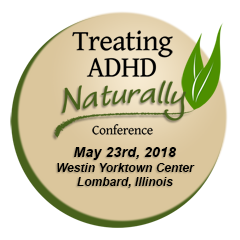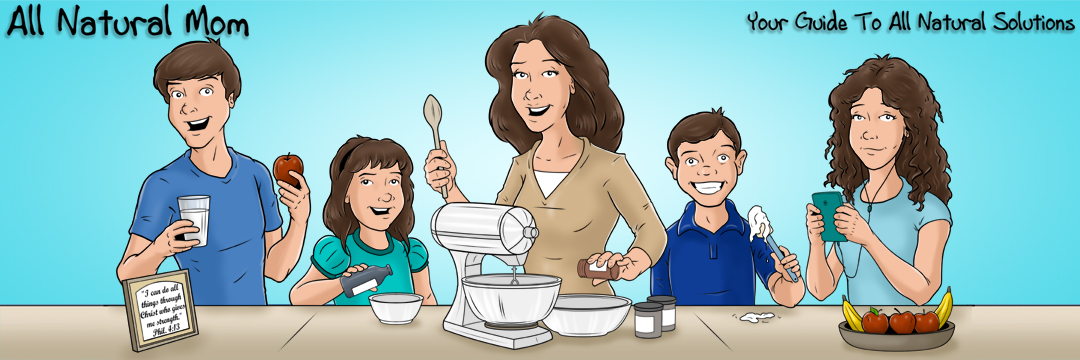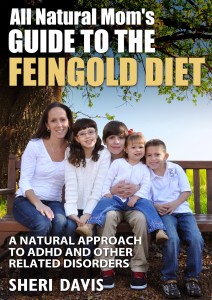Coming in May, 2017 to Amazon! “Doing Disney On a Special Diet – All Natural Mom’s Guide to Avoiding Dyes, Artificial Flavors, and Other Food Allergens While Enjoying the Parks” will help take the worry out of your vacation planning! Whether you just avoid dyes and artificial flavors, or you avoid other foods as well like gluten and dairy, Sheri provides some practical tips for enjoying Disney (and Disney cruises) while navigating a special diet.
Read what others have to say: “Thank you so much for putting this together! Traveling with a special diet is a daunting task and this will make it so much easier and enjoyable!” – Lori, mother of 2
Because I love my followers, I’m posting the intro and first chapter here! (Final copy may change slightly.) The book will be available in both e-book and paperback in early May and includes a 7-day meal plan complete with shopping lists and recipes!
Table of Contents
Introduction
Chapter 1: Meal Planning
Chapter 2: The Airport
Chapter 3: Accommodations With a Full Kitchen
Chapter 4: Accommodations Without a Full Kitchen
Chapter 5: Eating Out
Chapter 6: Eating at the Parks
Chapter 7: Disney Cruising
Chapter 8: Tips for Disney
Chapter 9: Miscellaneous Items to Pack
Chapter 10: Resources for Disney Vacation Planning
Sample Meal Plans
Sample Shopping Lists
Recipes
Introduction
I love Disney! We used to go every year so it can be done when avoiding the Big 3, (which I refer to as dyes, artificial flavors, and the preservatives BHT, BHA, and TBHQ), or if you’re dealing with other food allergies. We’ve had lots of practice so I’ll share what we do. Disney is actually really good about food allergies for the most part.
Our family follows the Feingold Diet as our foundation. For the first few years on the Feingold Diet, we limited foods high in salicylates, but we have been able to add them back into our diet in moderation. My three youngest and myself follow a gluten and dairy free (GFCF) diet in addition to Feingold. My oldest is Feingold only with limited dairy.
I should probably first introduce myself! I am the author of “All Natural Mom’s Guide to the Feingold Diet – A Natural Approach to ADHD and Other Related Disorders.” I have four kids ages 16, 13, 10, and 6. Two boys and two girls. We have dealt with and overcome symptoms of ADHD, high functioning autism, Lyme disease, dyslexia, seizures, and food allergies.
If you avoid dyes or other additives but aren’t familiar with the Feingold Diet, I of course highly suggest you read my first book! Or visit my blog at www.allnaturalmomof4.com. You can also find helpful information on Feingold’s web site at www.feingold.org.
For a short run-down – the Feingold Diet is best known as an ADHD diet, though it is helpful for many other issues as well, and the concepts of the diet are beneficial for anyone who eats! There are two stages to the diet. In stage one, you will avoid both the Big 3 (dyes, artificial flavors, and preservatives), and foods high in salicylates (sals). Salicylates are the natural chemicals that plants produce to ward off bugs and diseases – think natural pesticide. 1
Some people lack the necessary enzymes (the PST enzymes specifically) to break down and process these natural substances (the salicylates), causing a physical and/or behavioral reaction. Kids or adults with ADHD are often low in this enzyme, which is why the Feingold Diet is often very helpful for them.
In our case, my son who was four at the time was a completely different child within two days of removing both the Big 3 and foods high in salicylates. Almost all of his ADHD symptoms disappeared as long as he stayed on diet. We were eventually able to add back in foods high in salicylates and move to stage two of the diet, where you only avoid the Big 3. Many people still limit the amount of salicylates in their diets though, and we do as well.
Whether you are a Feingold member or not, if your child is on a special diet (whether you just avoid dyes or your child also has food allergies), and you’re headed to Disney, there’s a lot of information that can be helpful to know ahead of time to make your vacation more enjoyable for everyone.
And obviously, I can’t cover every single food allergen specifically so I’ve written about our own family’s experiences at Disney. Everyone in our family avoids the Big 3, and my younger 3 kids and I avoid gluten and dairy as well. My oldest only avoids the Big 3. If your family avoids other foods, you will still find this guide helpful as I give a lot of tips that would apply to anyone on a special diet. Use your best judgement in deciding how to handle your family’s food allergies and preferences.
If you are new to eating gluten and dairy free, please familiarize yourself with those foods that are free of gluten and dairy. I mention foods throughout the book that my older son eats that are not free of gluten and dairy, but are free of the Big 3.
I originally had this information as a chapter in my next book, “Living Dye Free in a Cotton Candy World – All Natural Mom’s Guide to Avoiding Dyes, Artificial Flavors, and Preservatives in Every Day Life for Happier, Healthier Kids” but decided to make it a short stand-alone book instead as it started to take on a life of its own!
If you are new to special diets, this information may feel overwhelming at first, but it gets easier each time you plan a vacation and it’s really worth it when you can have a nice, peaceful vacation without meltdowns or reactions. Planning ahead is absolutely essential.
There have been a few isolated times where I thought, “I’m not gonna worry about the food. We’re on vacation.” I have regretted it every single time. Why? Because instead of taking a little extra time to plan, I had to deal with kids who were reacting, which put a damper on our vacation.
I’d much rather worry about the food than deal with the repercussions of crabby, hyper, fighting, crying kids afterward. That’s not to say that we are always 100% on diet while on vacation. When you’re not at home, some things are out of your control like cross-contamination issues or unexpected events, but we certainly do our best.
Many of the ideas presented in this book also apply to vacationing just about anywhere. I’ve only taken my kids to Disney World in Orlando, Florida so I reference Orlando specifically but most of this information will apply to Disneyland in California as well.
There are references to both flying to Disney or driving, and staying at a condo with a full kitchen, or staying in a regular hotel room. While you won’t be doing both, you may be doing each of these at different times for different vacations, so you may find the information helpful for other times.
After reading this book, I hope you’ll feel more confident and at peace saying to your kids, “Hey kids! We’re going to Disney World!” I hope this guide will help you make the most of your trip to the happiest place on earth!
Chapter 1
Meal Planning
The number one rule when you have a child on a special diet is: Be prepared! Whether you’re staying at a place with a full kitchen or not, I recommend making a meal plan before you leave for vacation along with a shopping list for groceries. I hate making meal plans because it takes so much time, but trust me, it’s worth it! You’ll be glad you did.
When you have a meal plan, you can bring what you need from home, and you’ll know exactly what you need from the store when you get there. And the next time you go on vacation, you can work from this same meal plan if you’d like. See the end of this book for a sample meal plan and shopping list to help you get started.
When we first started avoiding the Big 3, I never made a meal plan and just went shopping when I got there. Big mistake. We wasted so much food and had to throw out a lot the day we left, which means we wasted a lot of money as well. Since we typically stay at a place close to Whole Foods, I now get what I think we’ll need for the first half of the week and then go back for more later in the week.
When making your meal plan, also make a list of things you can bring from home as well like spices. I bring taco seasoning, hamburger seasoning, chicken nugget “breading”, sea salt, etc. Don’t forget to bring along any recipes you’ll need as well.
If we’re only having rice one night, I’ll measure out how much rice we need and pack it in my suitcase. I do the same with cereal. You could also buy these items when you get there but sometimes you don’t know what the stores will have in stock and if I know only one of my kids is going to eat one kind of cereal one day, I’d rather bring one serving than buy a whole box. I’ll also bring along any other snacks that can be hard to find in stores; things like a certain kind of beef jerky from our health food store.
I also pack any other miscellaneous items we might need like sippy cups, refillable insulated water bottles for the parks, Tupperware for fruit and sandwiches, a ceramic bowl and spoons for cereal and oatmeal, insulated food thermoses, zip lock bags, enzymes, vitamins, probiotics, tea, etc. (See the end of this book for a full list of suggested items to bring).
Shipping Your Food
When flying, some people go so far as to pack an entire suitcase with food. While I have packed a few food items in my suitcase, I’ve never filled an entire suitcase. If you get free luggage with your airline, this can be economical. However, if you have to pay for luggage, you could be paying up to $70 to bring your food with you. Remember you’ll have to pay for shipping both ways unless you pack the food in a collapsible bag that you can pack in another suitcase on the way back. I usually try to pack as much food as I can in our carry-on backpacks.
Another option is to ship a box of food to your hotel or condo ahead of time. Call ahead to find out what your hotel’s policy is and how you should address the box. Try to ship it so that it gets there a couple of days before you arrive. Most places will hold the box for you until you arrive. A select few of the Disney hotels will charge you a fee for doing this. Shipping charges will vary of course depending on how heavy and big the box is.
Groceries Delivered
If you don’t have a car, you can have your groceries delivered to your hotel or condo. I have not personally used these services but a lot of families with food allergies have. Here are the top three recommended grocery services. For updated info on pricing and options, please visit their web sites.
- Garden Grocer – gardengrocer.com 866-855-4350
Call or order ahead of time (at least a week is preferable) and choose your delivery date and time. Discounts are given the earlier you place your order so plan ahead. You can get up to 10% off by ordering 60 days in advance. You can call and talk to someone if you have any questions and then you will place your order online. They have a large selection of brands to choose from but they don’t list foods by specific stores. You can do a search at the top of their web site for the items on your list.
Fees: Currently the delivery fee is $14 for orders totaling between $40 to $200. Grocery bills over $200 have a delivery fee of only $2.
- WeGoShop – wegoshop.com 877-934-6746
This service is similar to Garden Grocer but they will go to multiple stores which is nice if you need things from both Whole Foods and Publix or Trader Joe’s. Their fees are a little higher though.
Fees: Currently the delivery fee is between $24-$29 for orders between $50 to $200, and an additional $5 for each additional store. They also add an extra 15% for gratuity if the groceries will be dropped off at the hotel’s front desk.
- Whole Foods
Whole Foods will deliver groceries to most Disney hotels. Call ahead to confirm. E-mail them your list ahead of time to Orlando.delivery@wholefoods.com. They request at least a 48-hour notice and they will add a 10% gratuity to your bill.
Fees: Fees are based on how far away your hotel is. It can range anywhere from $20 to $80. Disney hotels are currently listed at $30.
Keep in mind you will also want to tip your delivery person. Certain hotels like the Swan and Dolphin (not owned by Disney but on Disney’s property on the Boardwalk) do not accept grocery deliveries. Disney’s Beach and Yacht Club only accept deliveries at a set time each day which is currently between 4:30pm and 5:30pm.
Using Uber or Taxis
Your other option is to use Uber or taxi services to go grocery shopping yourself. Maybe I’m a control freak, but I personally like to do my own grocery shopping. I don’t trust the kind of produce someone else might pick out! There are lots of Uber drivers in Orlando so it shouldn’t be a problem to take one to the store and then call another one when you’re done shopping, and some drivers will wait while you shop. Just ask.
You can also use Uber during your stay to get to any restaurants. If you’re staying at a Disney hotel, you can also use the Disney bus transportation system to get to any other Disney hotels or to Disney Springs (formerly Downtown Disney) if you plan on eating at those places.
Rent a Car
This is the only way we vacation. I like the convenience of having a car and being able to run to the store whenever I need to. It does add to the cost of your vacation but hey, you’re at Disney. You’re already spending a boat load. Don’t forget the car seat if you have a little one and I always bring my car charger for my cell phone. Just don’t forget it in the car when you go back home! I did that once.
If you have a car, there are lots of options for shopping. There is a Whole Foods at 8003 Turkey Lake Road, near International Drive and Sea World. We stayed at Disney’s Port Orleans this summer and it was about a 15 to 20 minute drive, depending on traffic. There is a Wal-Mart right across the street from Whole Foods that has a full grocery department. Publix is a good option for a regular grocery store as well. There is one just down the street from Whole Foods at 7640 Sand Lake Road.
Keep going down the street from Publix and you’ll hit the Trader Joe’s at 8323 Sand Lake Road. And if you need a health food store, Chamberlin’s Natural Foods is at 7600 Dr. Phillips Blvd. which is right in that same area. There’s also a Five Guy’s Restaurant in that same shopping center. Bonus! (These addresses are listed again in chapter 9 under resources.)
Sometimes even with a meal plan though, plans can change. Whatever food we have leftover that we haven’t opened, I try to return on the last day so I save my receipts.
Driving to Disney
If you’re close enough and able to drive to Orlando, you can load up your car with a big old cooler and bring all your own food! Yay! Or stop at a grocery store when you get there. My mom lives three hours from Orlando during the winter, so she would meet us in Orlando. She made a few things at her house beforehand and brought them up with her. Things like pancakes, muffins, chicken nuggets, chili, stew, etc. Then she just threw it in the freezer when she got there. That way, we didn’t have to spend as much of our time on vacation cooking. We just heated up the food. That was really nice.
To read the book in its entirety, look for it on Amazon in May, 2017! If you haven’t read my first book, you can check it out on Amazon here. And don’t forget, if you leave a review on Amazon for either of my books, message me on Facebook for a FREE copy of my Feingold Stage One or my GFCF (gluten and dairy free) e-cookbooks (for a limited time)!
Written by Sheri Fortes - Visit Website
Author of "All Natural Mom's Guide to the Feingold Diet"
Follow me on Facebook, Pinterest, and Instagram
The Treating ADHD Naturally Conference is coming back to Chicago May 23, 2018! More details coming soon at www.mothersdetermined.com.




Wow, this will help a lot families that face the special diet giant traveling to any destination. I love the book covers and colors.
I’m super excited about the launch of this book. It’s going to help so many people!